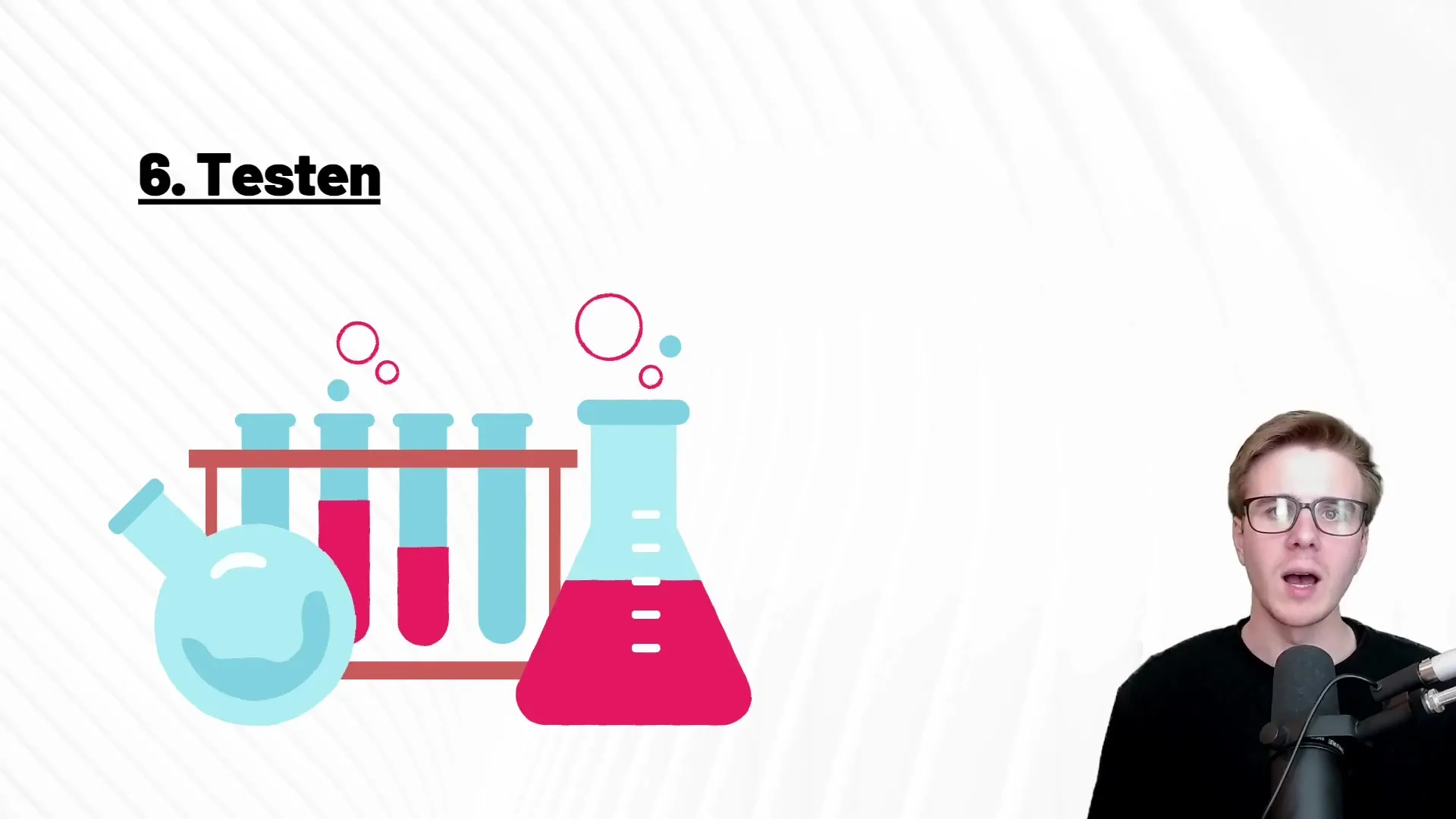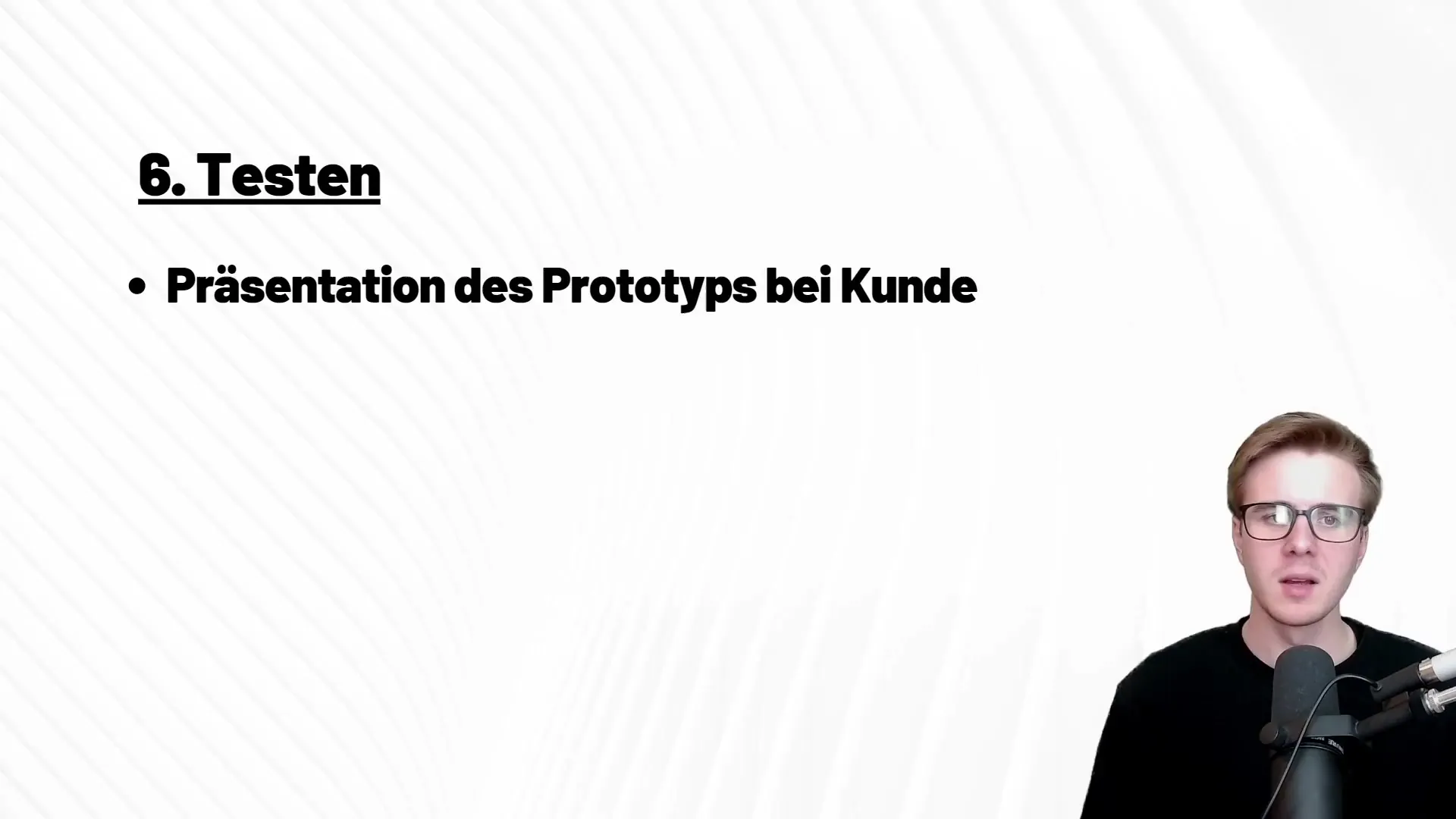Design Thinking is a creative process aimed at developing innovative solutions by focusing on user needs and functionality. In the sixth phase, Testing, the goal is to truly put the developed prototypes to the test. You have now created a prototype and want to know if it is ready for the market or if adjustments are necessary. In this guide, you will learn how to successfully conduct tests and collect valuable feedback from users.
Key Insights
- Conduct tests with real users to receive specific feedback.
- Address the needs of the target audience, whether B2B or B2C.
- Use the feedback received to further improve your prototype or initiate the next development cycle.
Step-by-Step Guide
1. Test Preparation
Before starting the testing, make sure you know exactly what the goal of the test is. Create a detailed test concept where you outline what you want to find out and what questions you want to ask the test subjects. Prepare the necessary materials, whether it's the prototype itself or information materials to be presented to the test subjects.

2. Selecting Test Subjects
Selecting the right test subjects is crucial for the success of your tests. Depending on whether you are developing a product for business customers or end consumers, you should select relevant individuals who may use this product in the future. In the B2B sector, you can organize meetings, while in the B2C sector, you might have the opportunity to conduct product tests on the street or create surveys.
3. Conducting Tests
Now it's time to conduct the tests. Ensure that the test subjects can work in an undisturbed environment to express their honest opinion. Present the prototype and let the test subjects try it out while you carefully observe their reactions and concerns. It is important to promote values such as openness and authenticity throughout the entire test to receive honest feedback.
4. Collecting Feedback
Once the test subjects have gathered their experiences, it is important to collect structured feedback. Ask specific questions to understand what worked well and where there are weaknesses. Avoid general statements like "It's good, but..." – testers should provide concrete improvement suggestions.
5. Analyzing Feedback
After the tests, you analyze the collected feedback. What were the most common remarks? Are there improvement requests that repeat multiple times? Document all insights carefully to get a good overview of the strengths and weaknesses of your prototype. This is the key to further development.
6. Making Adjustments
Based on the feedback, you are now able to make targeted adjustments. You can either implement smaller iterations or, if necessary, return to an earlier stage of the design thinking process. Depending on the complexity of the feedback, it may be necessary to revise the prototype again or even restart the ideation process.

7. Making a Decision
At the end of the testing process, you decide whether your prototype is ready for implementation or if further tests are necessary. If you perceive the feedback as positive and the prototype already meets the needs, you can prepare for implementation and move it into production.

Summary
In this guide, you have learned the key steps for testing in the design thinking process. You now know how to plan and conduct tests, how to collect valuable feedback, and how to use this feedback to optimize your prototype. Armed with this knowledge, you are well-equipped to successfully implement your ideas.
Frequently Asked Questions
How long does the testing process typically take?The testing process can vary depending on the complexity of the product and the number of test runs. However, make sure to allocate enough time to receive valuable feedback and make adjustments.
How many test subjects should I involve?The number of test subjects depends on your project, but 5-10 individuals are often sufficient to gather relevant feedback.
What should I do if the feedback is overwhelmingly negative?Analyze the specific points of the feedback and prioritize the necessary adjustments. Use this feedback as an opportunity for improvement.


